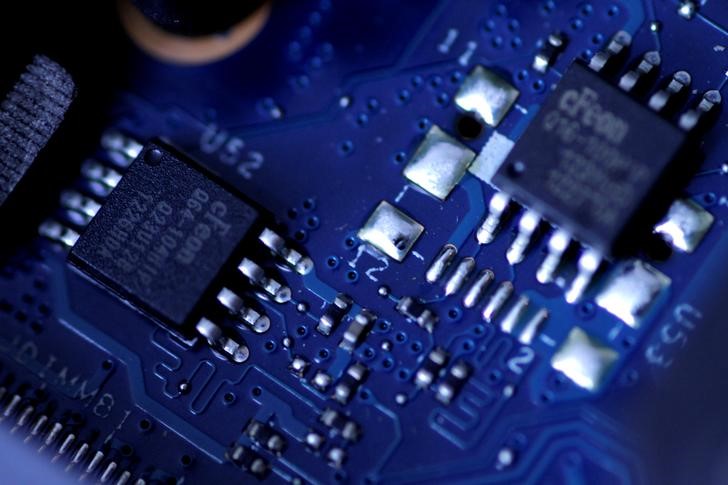(Reuters) - French-Italian chipmaker STMicroelectronics (BN:STM) (PA:STM) raised its full-year net revenue guidance, citing new products, customer schemes and improved market conditions, as it expects the worst to be over for the auto industry.
The company, which makes a range of sensors and chips used in the telecoms, auto and manufacturing sectors, added on Thursday that all its manufacturing activities worldwide were back to full operations.
For the automotive sector in particular, which was hit by closures at carmakers, the company confirmed a recovery in China during the quarter, partially compensating for weakness in Europe and in the United States.
STMicro, which generates over 60% of its revenue in Asia-Pacific and whose customers in the region include Samsung (KS:005930) and Huawei [HWT.UL], now sees 2020 sales between $9.25 billion and $9.65 billion, compared with $8.8 billion and $9.5 billion previously.
The company expects second-half sales to be in a $610 million to $1.01 billion range compared to its previous guidance of $340 million to $1.04 billion, with an anticipated 17.4% revenue growth in the third quarter.
STM shares rose more than 2% on the Paris and Milan bourses. Brokerage Liberum expects revenue and earnings to be well ahead of the current consensus in 2020 and 2021, benefiting from an acceleration of the semiconductor sector as a whole.
STM stock slumped about 50% between February and March, but has been gradually recovering in line with the sector index (SX8P).
Chief Executive Jean-Marc Chery said during a conference call that the U.S. blacklisting of Huawei did not impact the group's results in the second quarter, though it expected one in the fourth quarter but that was "embedded in our 2020 plan".
Several countries including Britain have banned the use of Huawei technology in their networks due to U.S. pressure.
STMicro reported second-quarter sales above its own guidance, with a 6.5% drop instead of an expected 10.3% decrease, driven by its microcontrollers and digital segment.
It now expects capital expenditure for 2020 of about $1.2 billion, at the upper end of its previous guidance.
